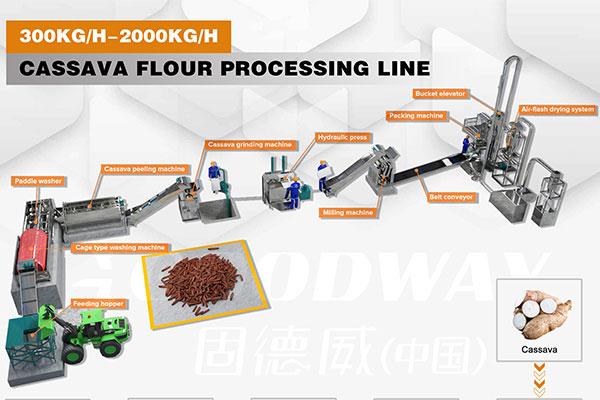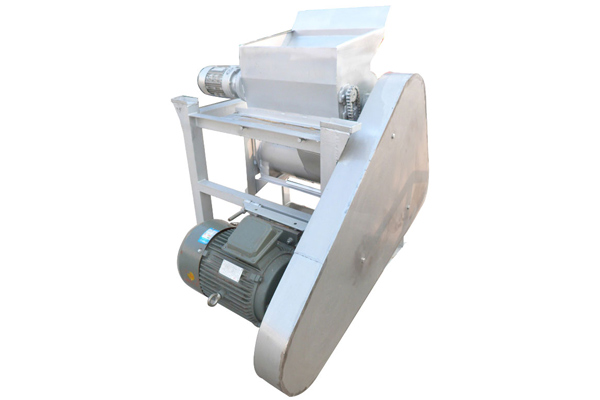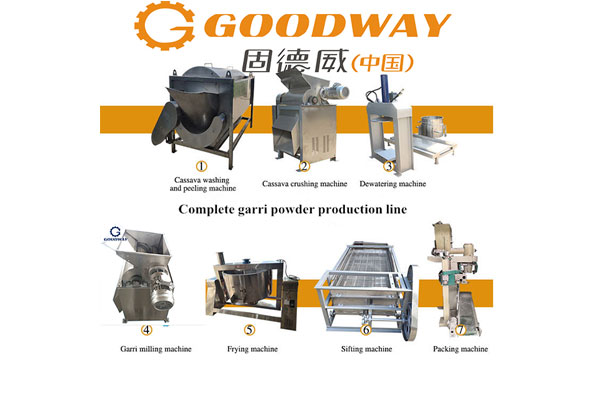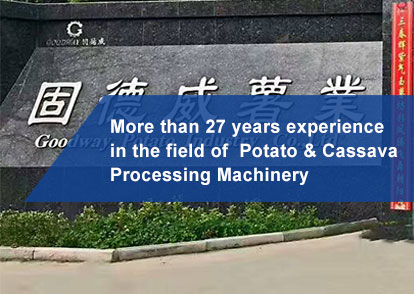Tapioca starch processing can be fresh potato processing or dried potato. The advantages of starch processing of fresh potatoes are that they are fresh and undamaged, have high starch content, and have a high powder yield. The disadvantages are that they are inconvenient for transportation and storage and must be processed in time. Generally, the processing is required to be completed within 2-3 months of harvest. Using dried yam as a raw material, there is no need to worry about the storage of raw materials, and the production is not restricted by the season. The current tapioca starch processing technology is also relatively advanced, which can better use machinery to complete the tapioca starch processing.
1. Tapioca starch processing: fresh potato processing
There are many varieties of cassava, and the starch content and quality of different varieties are quite different. Fresh potato raw materials used for cassava starch processing require high starch content, less fiber, soluble sugar, protein and phenolic substances, and the potato skin is smooth and free of disease spots. The production process of tapioca starch is basically the same as that of potato starch production and processing and sweet potato starch processing. Fresh potatoes are washed and drained and then enter the crushing and screening section. The continuous improvement and innovation of crushing technology has been able to complete the crushing of large tons of raw materials, and the crushing speed is high, the efficiency is high, and the starch free rate can reach 98-99%. Rich filtering means, multiple processes to discharge potato residue and fiber; starch refining adopts cyclone station, and the concentration system quickly separates protein powder; after dehydration and drying, the finished dry starch is obtained.
2. Tapioca starch processing: dried potato processing
The starch produced from dried potato must first be cleaned up, and impurities are removed with screening, winnowing, and magnetic separation equipment, and then soaked. There are two soaking methods. One is to crush the dried potato before soaking, and the other is to put the dried potato in a container and soak the whole piece. Add 0.02mol/L saturated lime water to the soaking water of dried potatoes, so that the pH of the soaking liquid is about 10, the soaking time is 12 hours, and the temperature is 35-40°C. After soaking, the water content of cassava is about 60%, and then rinsed with water to remove pigment and dust. The process of soaked potato chips is the same as that of fresh potato.
The purpose of soaking dried potato with lime water is to expand the fiber in potato chips so that they can be separated from the starch after being broken; make the pigment in potato chips easy to ooze and improve the whiteness of starch; calcium can reduce the viscosity of pectin and make the potato The paste is easy to sieving; maintains alkalinity and inhibits microbial activity; makes starch easy to precipitate, easy to separate from protein, and improves recovery.

 EN
EN
 fr
fr  es
es  it
it  pt
pt 







